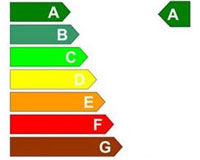The 2010 Energy Performance of Buildings Directive (Directive 2010/31/EU) (the “directive”) is considered to be the main legislative tool dealing with the energy efficiency of buildings across the EU.
It requires the European Commission, by 1 January 2017, to conduct an evaluation of the experience gained and progress made during its application. If necessary, following the evaluation, the Commission is tasked to make proposals on its future application.The 2010 Energy Performance of Buildings Directive (Directive 2010/31/EU) (the “directive”) is considered to be the main legislative tool dealing with the energy efficiency of buildings across the EU.
As part of this process, until 31 October 2015, the Commission is consulting broadly on the impact of the directive and any areas for improvement.
The public consultation is intended to inform the evaluation. It is an opportunity for all those involved in the energy performance of buildings to steer proposals. It is suggested that the consultation may also act as a framework for further consultation on topics such as district energy, retail, building automation and monitoring, building regulations and financing.
The directive requires member states to set energy performance standards for buildings and to ensure that, by the end of 2020, all new buildings are “nearly zero-energy” buildings. The energy is required to be provided by, or to a large extent by, renewable sources.
The benchmarking system introduced by the directive was intended to create an incentive for making energy performance requirements set by domestic building regulations more ambitious.
The questions being asked in the consultation suggest that the incentive may not have worked as effectively as anticipated. In July 2014, the Commission reported on the outlook for attainment of the indicative target of 20% energy savings by 2020. While the implication is that the target is on track, acceleration of renovation of existing building stock from 1.4 to 2% annually was seen as one of the greatest challenges.
The online questionnaire is wide-ranging, from overall assessment to energy performance certificates (“EPCs”) and smart finance to enforcement and compliance.
Key points from the questionnaire
- Overall assessment: in addition to queries about the success or otherwise of the directive, specific questions are raised regarding effectiveness in increasing renovation, accelerating investment in improvements and contributing to
cost-effective improvements. - Enforcement and compliance: the proper enforcement of the energy efficiency requirements in regional and national building codes is an area of concern to the Commission. Questions on cost-optimum methodology and ways of calculating energy performance at national/regional level are posed.
- EPCs and stimulating energy-efficient renovation of the building stock: mandatory EPCs for all buildings; potential binding targets and minimum renovation targets, and the effect of EPCs and available data, are open for debate.
- Smart finance: the role of current national subsidies for fossil fuels; the best financing tools and addressing split incentives between landlords and tenants.
- Renewable energy and district and city level policies: comments are sought on experiences and the options available.
- Building data, buildings systems requirements and operations: a suggested central EU database of EPCs and qualified experts, minimum requirements for technical building systems and the gap between design and energy performance.
Some may welcome the ability to comment on areas that could lead to enhanced efficiency measures and associated opportunities. In so doing, the directive should not be considered in isolation.
Many will be aware of the role of the Energy Efficiency Directive (2012/27/EU) (the “EED”) and its requirement at Article 8 for non-SMEs to assess their energy consumption and identify potential energy saving measures. In the UK, Article 8 has been implemented by the Energy Savings Opportunity Scheme Regulations 2014, pursuant to which the deadline for participants notifying the scheme administrator of compliance is 5 December 2015 for the first phase. At present, implementation of energy-saving measures identified are not mandatory and will not be made public. However, that may change.
Mixed messages to 2020?
Around the same time as the consultation was issued, the chancellor published Fixing the Foundations: Creating a more prosperous nation, otherwise called the “productivity plan”.
The new government signalled its position in relation to proposals aimed at assisting energy efficiency, stating it “will keep energy efficiency standards under review, recognising that existing measures to increase energy efficiency of new buildings should be allowed time to become established”.
With less than five years until the 2020 target, the concept of allowing time for measures to be established may be slightly adrift of the EU’s expectations on the pace of change required.
Olivia Jamison and Paul Sheridan are partners at CMS Cameron McKenna LLP
The consultation document is open until 31 October at:
| Number of non-domestic energy performance certificates lodged on the register in England & Wales by energy performance asset rating (each year/quarter to 30 June 2015)* | |
|---|---|
| Number of lodgements | 572,619 |
| Total floor area (m2) | 432177022 |
| A | 4691 |
| A+ | 254 |
| B | 43837 |
| C | 154530 |
| D | 170779 |
| E | 94791 |
| F | 47158 |
| G | 56429 |
| Not recorded | 150 |
| Number of display energy certificates lodged on the register by energy performance operational rating | |
|---|---|
| (each year/quarter to 31 March 2015)* | 223193 |
| Total floor area (m2) | 811610561 |
| A | 1472 |
| A+ | 0 |
| B | 11090 |
| C | 44471 |
| D | 76388 |
| E | 49743 |
| F | 19586 |
| G | 20430 |
| Not recorded | 13 |
* Source: Department for Communities and Local Government. https://www.gov.uk/government/statistical-data-sets/live-tables-on-energy-performance-of-buildings-certificates-history








